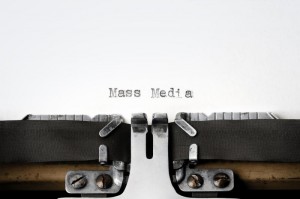 Social media campaigns seems to be getting the bulk of attention in marketing and communication budgets these days, but I would argue that mass media still packs a far more potent punch when you are trying to build a brand or generate top of mind awareness among a mass audience.
Social media campaigns seems to be getting the bulk of attention in marketing and communication budgets these days, but I would argue that mass media still packs a far more potent punch when you are trying to build a brand or generate top of mind awareness among a mass audience.
Skeptical? Let’s look at some numbers.
Super bowl advertisers paid as much as $4.5 million for a 30 second spot this year – a new record – to reach 114 million viewers. That’s just over 4 cents a viewer. In 1993, advertisers paid $850,000 to reach 90 million viewers, just under a penny per viewer.
That means advertisers are spending more than four times as much to reach the same number of people today as they did in 1990. Even adjusting for inflation, advertisers are spending three times as much: $850,000 adjusted for inflation is just over $1.5 million.
Why? Because today there are very few opportunities to reach more than 100 million people with a single 30-second message.
First cable television, followed by the Internet, brought in a wave of fundamental change in how we use media. We have gone from an age of mass media to the age of media choice, being able to consume precisely what we want, when we want to see, hear, or read it.
My thesis in grad school was about how the impact of cable television was going to fundamentally change how we consume media, as channels would continue to fragment a mass audience, delivering narrow topics to appeal to specific market segments.
Later, the Internet and social media would accelerate that trend in a profound way.
The result: Broadcast television has watched its total audience shrink, despite a growing U.S. population: 11 million fewer viewers watch broadcast television in the last decade.
Recently, the head of Netflix predicted broadcast television would die by 2030. And I see a lot of my colleagues reacting by focusing away from mass media and more toward social media.
I think you have to remain focused on both today, and for a very long time still to come.
Because a funny thing happened on the way to mass media: It’s still the only game in town to reach the biggest audiences.
Advertisers know that, and that’s why they still spend big dollars on mass media: Where else can you reach an audience the size of the Super Bowl that has the same demographics?
And there is this: Mass media still produces some of the best content available anywhere.
Ask yourself, when you read Google News and look to click on a story, are you more likely to click on a link from a mass media source or one from a blog? The truth is most people will look for the trusted mass media source.
That’s the key reason I still believe mass media firms will be around and vital for any communicator for many years to come: They often control the best quality content.
You see I think consumers are a lot smarter than they are often given credit. I would argue we are at the dawn of changing from “content is king” to “quality content is the thing.”
These mass media companies that have survived just might be the ones who really thrive, not die, in the future, because they produce the best quality content.
Think what happens to these big media companies when consumers move away from the “just okay is good enough” philosophy when it comes to content on the net to demanding only the good stuff.
Moreover, mass media companies are repurposing their content everywhere and as a result, and have often become a powerhouse in social media.
I think these trends are happening already as indicated by these numbers: The New York Times has over 15 million followers on Twitter, 9.2 million “likes” on its Facebook page, and a 100 million-plus views on its YouTube channel, and it’s a newspaper.
While it would be pretty phenomenal to have Justin Timberlake with 41 million followers send a tweet out about your firm, what are the chances of that happening, versus getting a story in the New York Times?
One New York Times feature could end up reaching 1.2 million printed newspaper readers and another million through their digital version.
The Times then tweets out your story to reach another 15 million people. Then, one of the major television networks – which often get story ideas from the Times – does a piece. Radio stations pick the story up from the New York Times news service, and pretty soon the momentum in social media and mass media have combined to deliver more coverage than the all-powerful Timberlake.
More importantly, unlike a JT tweet, your story endures: Google keeps it alive and accessible for millions more to read in the days, months, years ahead. You post a link to the Times story on your website, share a reprint with key customers, leveraging this one piece again and again.
That’s why I am not willing to give up on mass media. I think every budget can get a lot more bang for the buck by making sure that mass media remains a core component when you are looking to build a brand or maintain awareness.
Do you have a mass media strategy and is it part of your PR plan?




